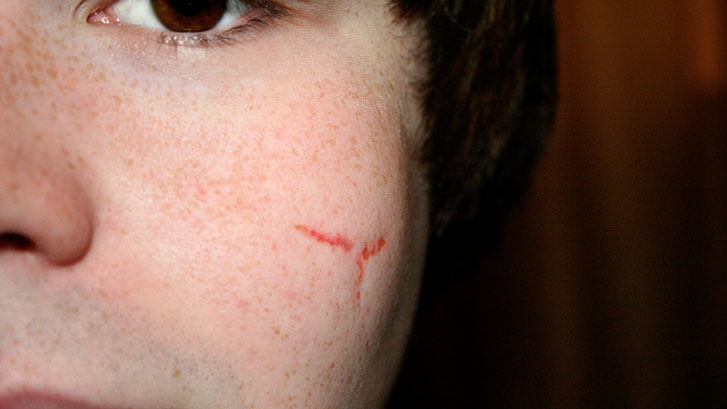Facial Scar Removal: Getting Rid of Unwanted Scars
For the most part, a scar isn’t bad if it’s small or in a location that’s easy to conceal. But when it’s not, you may wonder if there’s a way to treat it, other than hiding it under your clothes, that will make it go away or at least change how it looks.
Here’s a look at some of the options available to you when it comes to reducing the appearance of those unwanted scars.
Scar Revision Surgery
Scar revision surgery is meant to minimize the scar so that it’s more consistent with your surrounding skin tone and texture.
Scars are visible signs that remain after a wound has healed. They are unavoidable results of injury or surgery, and their development can be unpredictable. Poor healing may contribute to scars that are obvious, unsightly or disfiguring.
Even a wound that heals well can result in a scar that affects your appearance. Scars may be raised or recessed; different in color or texture from surrounding healthy tissue; or particularly noticeable due to the size, shape, or location.
Although scar revision can provide a more pleasing cosmetic result or improve a scar that has healed poorly, a scar cannot be completely removed.
Scar revision treatments include:
- Topical treatments—such as gels, tapes, or external compression can help in wound closure and healing, or to reduce the ability of skin to produce irregular pigment. These products may be used to treat existing surface scars and discoloration, and to aid in healing of scar revision procedures.
- Injectable treatments—are often used to fill depressed or concave scars. Depending on the injectable substance used and your particular scar conditions, results may last from three months to several years. Therapy must be repeated to maintain results. One form of injection therapy uses steroidal-based compounds to reduce collagen formation and can alter the appearance, size, and texture of raised scar tissue.
- Surface treatments—are most often used for cosmetic improvements of scars. These methods can soften surface irregularities and reduce uneven pigmentation. Surface treatments are a controlled means of either mechanically removing the top layers of skin or changing the nature of tissue.
These treatment options include: dermabrasion (a mechanical polishing of the skin), laser or light therapy (causes changes to the surface of the skin that allow new, healthy skin to form at the scar site), chemical peel solutions (penetrate the skin’s surface to soften irregularities in texture and color), and skin bleaching agents (medications applied topically to lighten the skin).
Scar Removal: Home Remedies
The human body is capable of taking care of scars and they tend to get lighter with time, but there are some home remedies that you can try to speed up the healing process, including:
Aloe Vera—a natural scar removal remedy due to its anti-inflammatory and antibacterial properties. Apply aloe vera twice daily, but do not use on open wounds.
- Peel the outer green cover off an aloe vera leaf and scoop out the gel-like substance.
- Apply the gel on your scar and massage in circular motions.
- Leave it on for about 30 minutes, then wash it off.
Olive Oil—is rich in vitamin E and helps keep the skin soft and moisturized. Repeat either of these remedies several times a day until you get the desired result.
- Apply some warm extra-virgin olive oil to the affected area and massage using small, circular motions. Wait 30 minutes, then wipe off the oil with a clean cloth. You can also leave the oil on your skin overnight.
- Another option is to mix a little lavender oil in some extra-virgin olive oil, apply it on the affected area and massage gently for a few minutes. Leave it on for 20 to 30 minutes, then rinse it off with lukewarm water.
Lemon—can remove dead skin cells, promote the growth of new skin cells, and improve skin elasticity. Repeat this remedy once daily until the scar fades.
- Apply some lemon juice on the affected area.
- Wait 10 minutes, then rinse it off with warm water.
Honey—a natural moisturizer. Repeat this remedy daily before going to bed.
- Apply some honey over the scar, cover it with a bandage, and leave it on overnight.
- The next morning, wash it off with warm water.
Speak with Dr. Binder
If you decide that home remedies aren’t doing enough to fade your scars, then you should talk to Dr. Binder about the surgical scar removal options that might work best for you. With years of experience in his field, he as the expertise to help you make the right decision about how best to deal with your unwanted scars.

